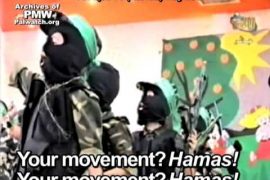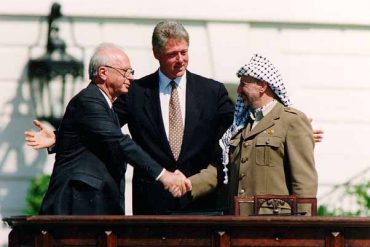1) At the Jerusalem Post Khaled Abu Toameh reports on Fatah accusations against Israeli journalists.
“In an unprecedented move, the Palestinian ruling Fatah faction has published the names and photos of three Israeli journalists, accusing them of “incitement” against the Palestinian Authority leadership.
In a post on its Facebook page, Fatah called on Palestinians to be wary of: Yoni Ben-Menachem, former director-general of the Israel Broadcasting Authority and analyst for the Jerusalem Center for Public Affairs; Gal Berger, Palestinian affairs correspondent for KAN, the Israeli Public Broadcasting Corporation; and Ehud Ya’ari, Arab affairs analyst for Channel 12.”
2) An incident (unreported by the BBC) that recently took place on the border between Israel and Lebanon is analysed by Dr Shimon Shapira at the JCPA.
“On April 21, 2020, Hizbullah stated in its unofficial mouthpiece Al-Akhbar that it was behind what it called the “fence operation.”
On April 17, three Hizbullah units, working simultaneously, penetrated the border fence with Israel at three locations. The units severed the warning wire between the fence and the watchtowers and then breached the fence. It was said that at one location the fence was breached widely enough to allow a vehicle to cross. However, no vehicle came through.”
3) Prior to the confirmation of the first case the ITIC published a report on “The fight against the spread of COVID19 in the Palestinian refugee camps in Lebanon”.
“The Palestinian refugees living in Lebanon are concentrated in 12 refugee camps and another 50 sites outside the camps. The Palestinian population is spread throughout Lebanon, mainly along the coast. In 2017, UNRWA estimated that there were 463,664 Palestinian refugees in Lebanon (Encyclopedia of the Palestinian Refugee Camps, no date), but their real number is probably lower. The Palestinian refugees living in Lebanon are not recognized as citizens of the state and do not enjoy many civil rights.
4) At the JISS Dr Jonathan Spyer documents ISIS activity during the Coronavirus pandemic.
“Islamic State, commonly known as ISIS, lacks administrative control of any territory. But across a broad swath of Iraq and Syria, ISIS retains networks of support, and lines of communication and supply. Somewhere between 20,000 and 30,000 members of the group reour main active in this area. There is no shortage of either money or weaponry.
From Syria’s Badia desert in the west, eastward to the Euphrates River valley and Deir al-Zor province, and then deep into Sunni-majority central Iraq, the vanquished ISIS caliphate retains a kind of half-life. Beneath the nominal authority of three administrations – the Assad regime, the Kurdish-led Syrian Democratic Council and the government of Iraq, the structures and networks of ISIS are alive.
And with all three of these administrations preoccupied with the current pandemic, Islamic State is raising its head. A sharp uptick in ISIS activity has taken place across this space over the last two weeks.”
Wishing all our Muslim readers Ramadan Kareem and to our Druze readers, warm wishes for the Nebi Shueib holiday.




